Transformers Sample Assignment
Transformers
1. The turns ratio modified to 20:1, calculate the following values of Vs and Is for the given values of RLin the table below:

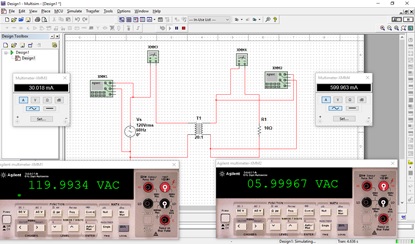
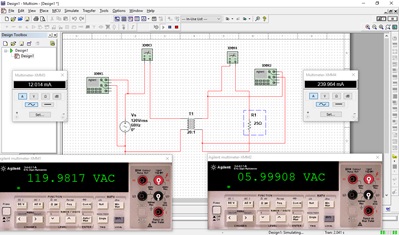
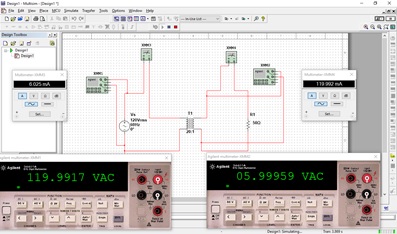
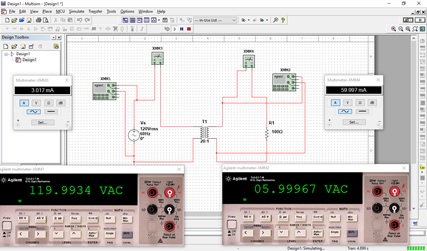
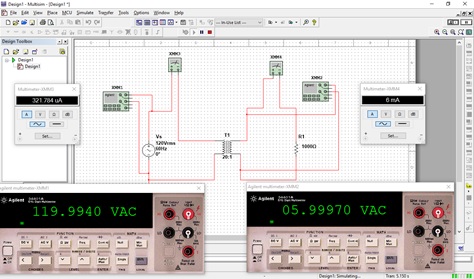
|
RL |
Calculated Vs |
Calculated Is |
Measured Vs |
Measured Is |
|
0 Ω |
120Vrms/20:1 = 6Vrms |
6Vrms/0ohms= 0A |
05.99Vac |
-r- |
|
10 Ω |
120Vrms/20:1 = 6Vrms |
6Vrms/10ohms= 600mA |
05.99Vac |
599.97mA |
|
25 Ω |
120Vrms/20:1 = 6Vrms |
6Vrms/25ohms= 240mA |
05.99Vac |
239.991mA |
|
50 Ω |
120Vrms/20:1 = 6Vrms |
6Vrms/50ohms= 120mA |
05.99Vac |
119.995mA |
|
100 Ω |
120Vrms/20:1 = 6Vrms |
6Vrms/100ohms= 60mA |
05.99Vac |
59.998mA |
|
1000 Ω |
120Vrms/20:1 = 6Vrms |
6Vrms/1000ohms= 6mA |
05.99Vac |
6mA |
2. Construct the transformer circuit in MultiSIM and complete the table in part 2 with the measured values of Vs and Is for each value of RL. Use the Agilent Digital Multi-meter to take the measurements and capture a screen shot of each measurement.
3. Discuss the following:
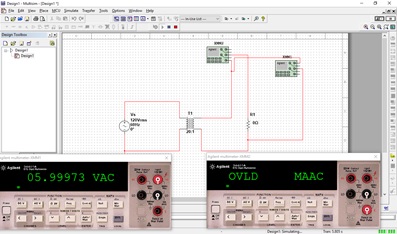
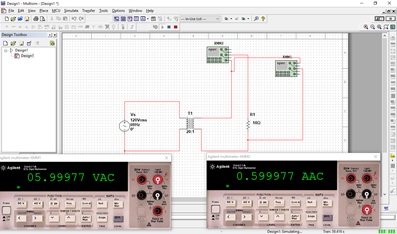
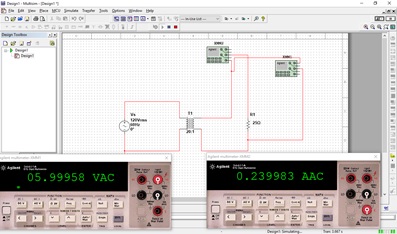
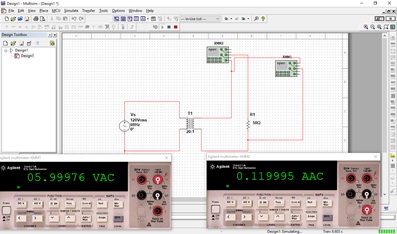
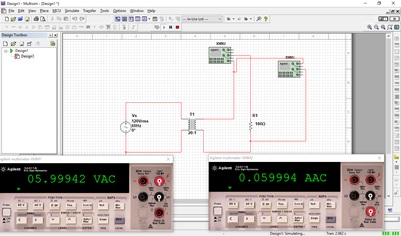

- Describe the relationship of RLon the secondary voltage.
The secondary voltage equals RL times Is.
- Describe the relationship of RLon the secondary current.
The secondary current equals secondary voltage divided by RL
- How do the calculated values compare to the measured values?
Yes, although I can get a 0A when resistor equals 0 but when measuring I get –r- or overload reading. Np/Ns = Vp/Vs.
- How would you go about calculating the transformer power efficiency?
Efficiency = (Vs*Is)/(Vp*Ip)
- How would you go about measuring the transformer power efficiency?
Put 2 wattmeter on both ends of the transformer (on the primary and on the secondary). Divide the output of power of primary by the input power of the secondary.
- Determine the transformer power efficiency for the circuit in MultiSIM. Include a calculation and a measured value.

Efficiency = (Vs*Is)/(Vp*Ip)= (5.99*0.599)/(120*0.030) = (3.58/3.60)
= 99.44%
Include all calculations, screenshots of measurements, the table results of part 2 and the answers to part 4 in a word processing document and submit as EE115W4LabYourGID.docx, or an equivalent word processing file extension.
Buy Transformers Assignment Answers Online
Talk to our expert to get the help with Transformers Assignment to complete your assessment on time and boost your grades now
The main aim/motive of the management assignment help services is to get connect with a greater number of students, and effectively help, and support them in getting completing their assignments the students also get find this a wonderful opportunity where they could effectively learn more about their topics, as the experts also have the best team members with them in which all the members effectively support each other to get complete their diploma assignments. They complete the assessments of the students in an appropriate manner and deliver them back to the students before the due date of the assignment so that the students could timely submit this, and can score higher marks. The experts of the assignment help services at urgenthomework.com are so much skilled, capable, talented, and experienced in their field of programming homework help writing assignments, so, for this, they can effectively write the best economics assignment help services.
Get Online Support for Transformers Assignment Assignment Help Online
Resources
- 24 x 7 Availability.
- Trained and Certified Experts.
- Deadline Guaranteed.
- Plagiarism Free.
- Privacy Guaranteed.
- Free download.
- Online help for all project.
- Homework Help Services
Testimonials
Urgenthomework helped me with finance homework problems and taught math portion of my course as well. Initially, I used a tutor that taught me math course I felt that as if I was not getting the help I needed. With the help of Urgenthomework, I got precisely where I was weak: Sheryl. Read More

